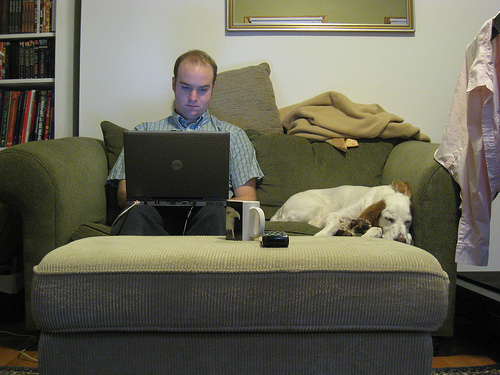
The U.S. Department of Labor (DOL) launched a new online resource that promotes inclusive workplaces and takes a unique approach to workplace flexibility that could help boost employment opportunities for people with disabilities.
The Workplace Flexibility Toolkit is a joint product of the Women?s Bureau and the Office of Disability Employment Policy. This article on the Occupational Health & Safety website says the goal is to share resources for people with ?complex employment situations,? including single parents, mature workers, and individuals with disabilities. Currently, the Toolkit contains 172 resources such as fact sheets, case studies, articles, reports, and websites, categorized by audience and type of flexibility.
Flexibility in the workplace typically refers to temporal and spatial boundaries; can a job be performed from a remote location and/or does the work have to be done during conventional ?business hours?? What makes the Workplace Flexibility Toolkit unique, according to the DOL, is an expanded definition of flexibility to include job tasks and type of work.
Task flexibility, or what is also referred to as Customized Employment, is especially important for people with disabilities seeking job situations that focus on their capabilities. ODEP has five years? worth of research demonstrating its universal value, as explained on the resource page entitled, ?The Case for Customized Employment?:
Since 2001, ODEP?s demonstration projects have proven that these strategies can be successful for all applicants. Projects nationwide have shown positive outcomes not only on behalf of people with significant disabilities, but on behalf of a wide range of job candidates, typically and traditionally perceived as ?hard-to-serve,? and who have various categorical labels within the workforce system: veterans with barriers to employment, transitioning youth, older workers, ex-offenders, people with limited English proficiency, and more!
Most searches of the toolkit eventually link you to the website of another organization or agency. But in addition to categorizations of resource type, the DOL also provides summaries to help users figure out whether the content will be useful before clicking. Looking at the Case Studies category under Tasks, for example, one finds stories of individuals with disabilities successfully finding employment in an elementary school, a video editing firm, a social services agency, and a warehouse facility.
The Workplace Flexibility Toolkit follows ODEP?s publication of Business Strategies that Work: A Framework for Inclusion back in June. That guide focused on seven different areas where businesses can take meaningful actions toward an inclusive workforce; from policy statements to recruiting practices to workplace accommodation and communication, as well as methods for measuring and building on success. As the business landscape continues to evolve, both resources will be invaluable for making life matter more for people with disabilities.
Comments?
Image by Plutor (Logan Ingalls).
Source: http://www.americantraininginc.com/workplace-flexibility-toolkit/
yvette prieto hypertrophic cardiomyopathy kaye stevens michael jordan engaged kid cudi breedlove florida state football
No comments:
Post a Comment
Note: Only a member of this blog may post a comment.